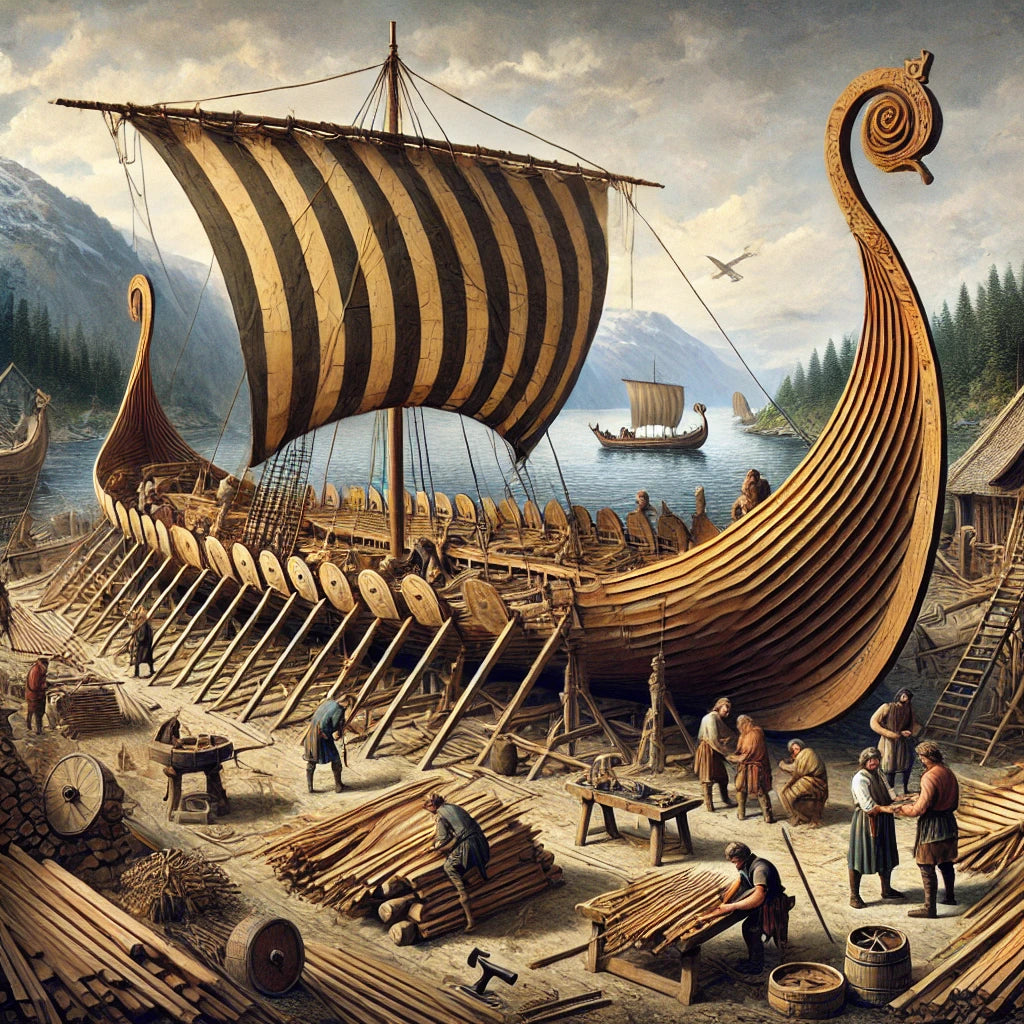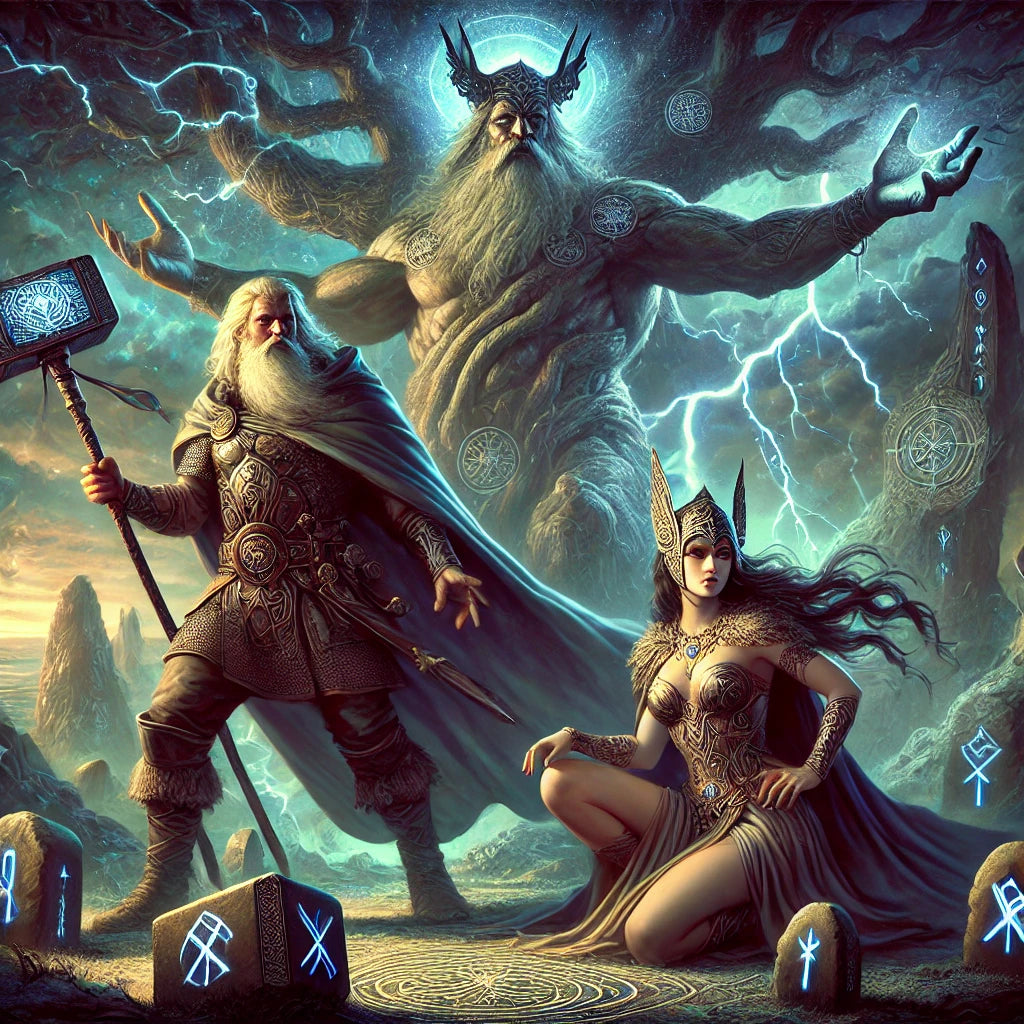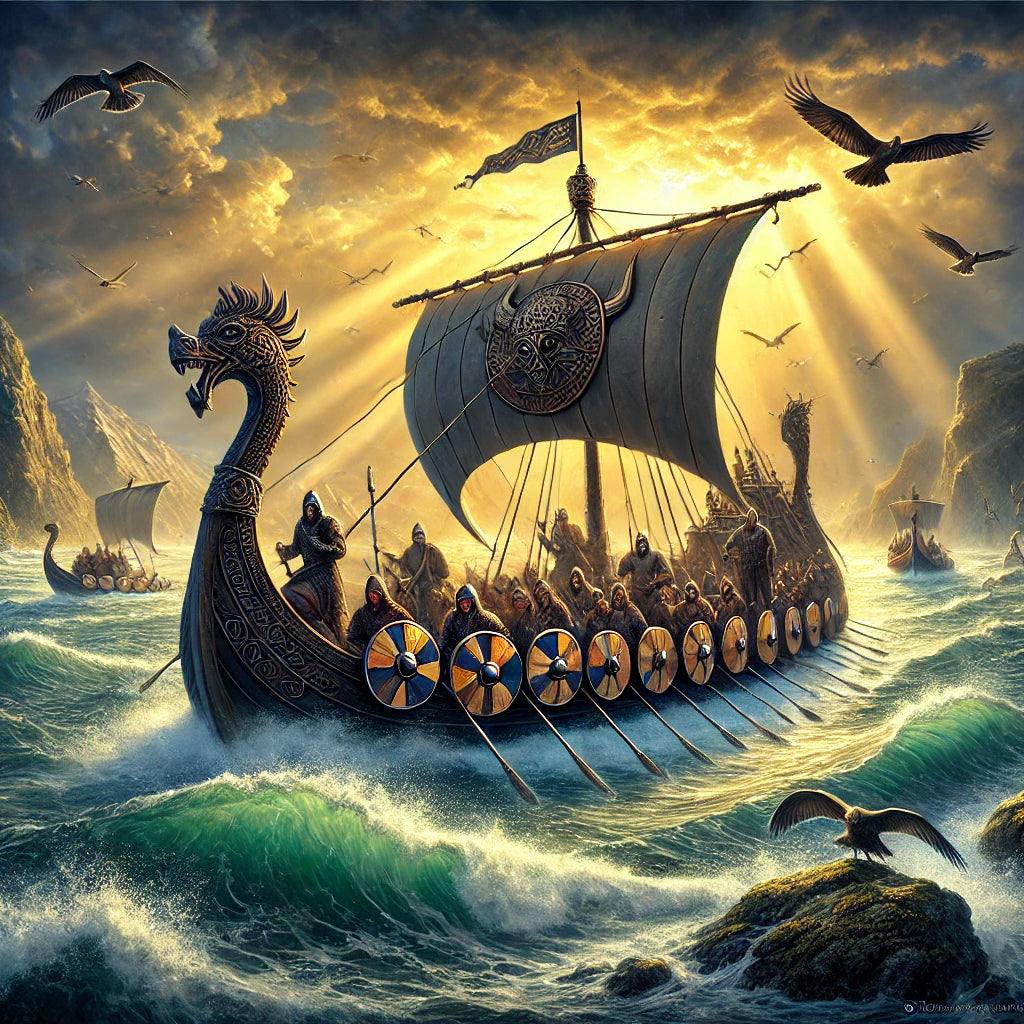
The Vikings: Legendary Explorers of the North
The Vikings came from Scandinavia and were known for their courage. They crossed the seas to reach America, long before anyone else. Their legacy is still with us, enriching our culture and stories.
Key points:
- Originating in Scandinavia, the Vikings were accomplished navigators.
- They explored and traded to the distant shores of the Americas.
- Their Viking heritage includes significant contributions to culture and history.
- Known as formidable warriors, they were also traders and artisans.
- Their traditions and beliefs continue to influence our modern world.
Origins of the Vikings and their arrival in history
The Vikings , explorers from Scandinavia, arrived in Europe in the 8th century. Their arrival marked the beginning of the Viking Age , which lasted from 793 to 1066.
Their adventure begins with the raid on Lindisfarne Abbey. This marks the beginning of the Viking Age . The Vikings will explore and attack Europe.
The first historical mentions
The earliest records of the Vikings show their impact on Viking history . Their arrival fascinated and frightened Europe from the beginning of the Viking Age .
The Viking Age: Definition and Chronology
The Viking Age lasted from 793 to 1066. Here is a timeline to better understand this period:
- 793: Raid on Lindisfarne, start of the Viking Age
- 865: The Great Heathen Army invades England
- 911: Foundation of the Duchy of Normandy
- 1066: Battle of Stamford Bridge, end of the Viking Age
The Scandinavians explored far from home. They left a lasting legacy in Europe and beyond.
Viking culture: a mixture of traditions and beliefs
Viking culture is rich and varied. It combines religion, rituals, and customs. Norse beliefs were very important to them.
Runic language and writing
The Vikings used runic writing. They used it for a variety of purposes, from inscriptions to weddings.
These symbols were engraved in stone, wood or metal.
Norse mythology
Norse mythology was very important to the Vikings. They worshipped gods like Odin, Thor, and Freya. Their stories were told through sagas.
These stories were entertaining and served to convey values.
Viking rituals and customs
Viking customs were a part of their daily lives . They held festivals such as the blot and the thing. These celebrations were religious and strengthened social bonds.
They were also moments of gathering and cohesion.
The iconic Viking ships
The Vikings were known for their exceptional ships. These ships helped them dominate the seas. They symbolized their power and ingenuity in Viking shipbuilding .
The drakkar, the legendary ship
The longship is the most famous Viking ship. It was perfect for long voyages and rapid attacks. Its shape, with dragon-shaped ends, inspired fear and facilitated Scandinavian navigation .
Construction and navigation techniques
The Vikings had very advanced shipbuilding techniques. They built strong and flexible ships. These ships could cross the North Atlantic.
Navigation was crucial for the Vikings. They navigated using the stars, currents, and birds. This allowed them to travel safely to distant places.
Viking Wars and Conquests
The Viking Wars marked the history of medieval Europe. They employed daring military strategies, allowing them to conquer and colonize vast territories.
Famous invasions and raids
The Vikings carried out numerous violent raids . They attacked England, France, and Ireland. These invasions left a trail of terror among the local populations.
The Lindisfarne Raid is famous. Monks were massacred there, marking the beginning of their conquests in England. The attacks on Paris demonstrated their strength against the Frankish defenses.
Territorial expansion
The Vikings didn't just raid . They created lasting settlements. They colonized the Danelaw in England, Normandy in France, and even Iceland and Greenland.
Their seafaring skills and innovative ships allowed them to establish themselves elsewhere, facilitating their territorial expansion.
| Region | Raids | Colonization |
|---|---|---|
| England | Lindisfarne, York | Danelaw |
| France | Paris | Normandy |
| Ireland | Dublin | - |
| Iceland | - | Reykjavik |
| Greenland | - | Green colonies |
The daily life of Viking warriors
The daily lives of Viking warriors were filled with training and strategy. They practiced hard to be ready for battle. They improved their skills and tactics.
Military training and strategy
Viking warriors ' military training included physical training and tactics. They were trained to be strong, resilient, and agile. Their battle strategy was key to their success, helping them defeat various enemies.
Weapons and equipment
Viking weapons and equipment were crucial to their success. They had swords, axes, and spears. Each weapon had a role in combat.
Viking equipment also included sturdy shields and armor. This equipment protected them and increased their chances of survival.
Viking: Explorer of the North
The Vikings, or Northern Explorers , were known for their spirit of adventure. They were great navigators. They discovered Iceland, Greenland, and even North America. This was long before Christopher Columbus.

Their thirst for discovery was immense. They were bold and determined. They used navigation techniques such as interpreting the stars and migratory birds.
Here is an overview of the main destinations of their Viking epics:
| Destination | Estimated year | Exploration |
|---|---|---|
| Iceland | C. 860 | Established by Norsemen led by Ingólfr Arnarson |
| Greenland | C. 982 | Explored by Erik the Red |
| North America | C. 1000 | Discovered by Leif Erikson, named Vinland |
The Vikings' courage and ingenuity enriched their cultures and left a lasting mark on history. Their ability to venture beyond known horizons demonstrates their daring and maritime precision.
The influence of the Vikings on Scandinavian civilization
The Vikings had a profound impact on Scandinavian civilization . Their expertise in urban planning and architecture shaped their era. And their influence continues today.
Architecture and urban planning
Viking architecture is known for its sturdy buildings. Longhouses, made of wood and grass, demonstrate their creativity. Forts, strong and economical, served as defenses and social centers.
- Longhouses - A typical residential structure that can house an extended family.
- Fortifications - Used as protection against invasions and as key points in Viking urban planning .
Impact on the local economy
Viking trade transformed the Scandinavian economy . Their voyages created trade routes. This stimulated exchange and enriched communities.
Here is an overview of the Viking economic impact on Scandinavian civilization :
| Economic Aspect | Viking influence |
|---|---|
| Trade | Introduction of international shipping routes |
| Cultural Exchanges | Expansion of commercial and cultural networks |
| Technologies and Tools | Dissemination of technical innovations |
Their influence enriched the region economically and culturally. Their legacy lives on in Scandinavian civilization .
The Vikings and Norse Mythology
The Vikings left their mark on history with their exploits and voyages. They left behind a rich cultural legacy thanks to Norse mythology. This mythology was present in their lives, their art, and their rituals.
Norse mythology is full of powerful deities like Odin, Thor, and Freyja. These Norse gods are at the heart of Scandinavian legends . Their adventures and battles are recounted in sagas .

Norse legends , passed down orally, were crucial to the Vikings . They gave them a sense of their existence. The gods interacted with humans, helping or punishing them.
Viking artwork, such as sculptures, demonstrates the importance of mythology. The Vikings used these stories in ceremonies to honor their gods.
"In Norse mythology , the tree Yggdrasil connects the nine worlds, symbolizing the interconnectedness of all existence."
Today, Scandinavian legends continue to fascinate. They demonstrate the lasting impact of these stories. Norse mythology inspires writers and artists.
| Element | Importance | Example |
|---|---|---|
| Norse gods | Fundamental | Odin, Thor, Freyja |
| Mythological stories | Central | Yggdrasil, Ragnarök |
| Viking art | Illustrative | Sculptures, runic engravings |
In conclusion, Norse mythology shaped Viking culture . It continues to captivate the imagination today.
Explorations and discoveries of distant lands
The Vikings were courageous explorers. They explored Greenland and even reached North America. Their navigational skills enabled them to make these voyages.
Travels to Greenland and America
Leif Erikson discovered Greenland. His voyages changed history. The Vikings also colonized Vinland, in America.
These discoveries demonstrate their maritime capacity and their desire to explore.
Trade and exchange with other civilizations
Their goal wasn't just to find new lands. They also wanted to trade. They traded furs, fish, amber, and slaves.
These exchanges enriched their cultures and those of their partners. Their influence was global.
Their quest for resources and knowledge made the Vikings important in history.
Conclusion
The Vikings, those legendary explorers , left a legacy deeply rooted in European history. Their historical influence extends far beyond mere myths and legends. By revisiting their origins, we can better understand how they permanently marked the culture, society, and even geography of the Old Continent.
Their mastery of navigation and shipbuilding techniques enabled daring voyages. They explored Greenland and America. Their military strategies and ability to conquer vast territories demonstrate impressive social and political organization.
These achievements have observable repercussions in contemporary architecture, economy, and social structures, highlighting the importance of their legacy.
In short, the lessons of Viking history remind us that their influence is not limited to heroic tales. They have a lasting contribution to Scandinavian and global civilization . The Vikings remain a source of inspiration and fascination, and their legacy continues to challenge us and enrich our understanding of global history.
FAQ
Who were the Vikings?
The Vikings came from Scandinavia. They were known as warriors, traders, and explorers. Their culture influenced Europe and North America.
When did the Viking Age begin?
The Viking Age began in 793 with the raid on Lindisfarne Abbey and lasted until 1066. This period saw maritime expansion and numerous raids across Europe.
What were the beliefs of the Vikings?
The Vikings believed in gods like Odin and Thor. They used runes for writing. Their beliefs and rituals were tied to the seasons and events of life.
What is a longship?
The longship was a famous Viking ship. It was perfect for sailing and transporting warriors. These ships symbolized the Vikings' maritime power.
What territories were conquered by the Vikings?
The Vikings conquered England, France, and Ireland. Their military strategy and mobility allowed them to colonize vast territories.
How did Viking warriors train for battle?
Viking warriors trained hard for combat. They used weapons like swords and axes. They also carried shields and armor.
What lands were discovered by the Vikings?
The Vikings explored Iceland, Greenland, and even the North American continent. Their voyages were the first from Europe to these regions.
What influence did the Vikings have on Scandinavian civilization?
The Vikings had a profound influence on Scandinavia. Their architecture, urban planning , and economics left a lasting legacy.
How important is Norse mythology to the Vikings?
Norse mythology was central to the Vikings. It influenced their cultural beliefs and practices. The sagas were essential to their cultural identity.
How did the Vikings interact with other civilizations?
The Vikings traded with many civilizations, enriching the economies and cultures of many regions.
